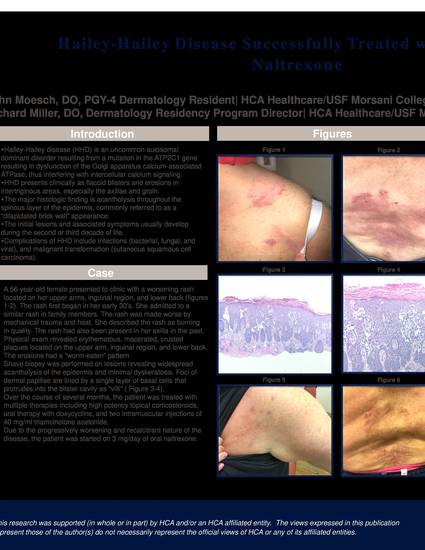
- Hailey Hailey Disase,
- Blistering disease,
- Naltrexone,
- Genodermatoses
Hailey-Hailey disease (HHD) is an uncommon autosomal dominant disorder resulting from a mutation in the ATP2C1 gene resulting in dysfunction of the Golgi apparatus calcium-associated ATPase, thus interfering with intercellular calcium signaling.
HHD presents clinically as flaccid blisters and erosions in intertriginous areas, especially the axillae and groin.
The major histologic finding is acantholysis throughout the spinous layer of the epidermis, commonly referred to as a “dilapidated brick wall” appearance.
The initial lesions and associated symptoms usually develop during the second or third decade of life.
Complications of HHD include infections (bacterial, fungal, and viral), and malignant transformation (cutaneous squamous cell carcinoma).
Available at: http://works.bepress.com/richard-miller/2/
